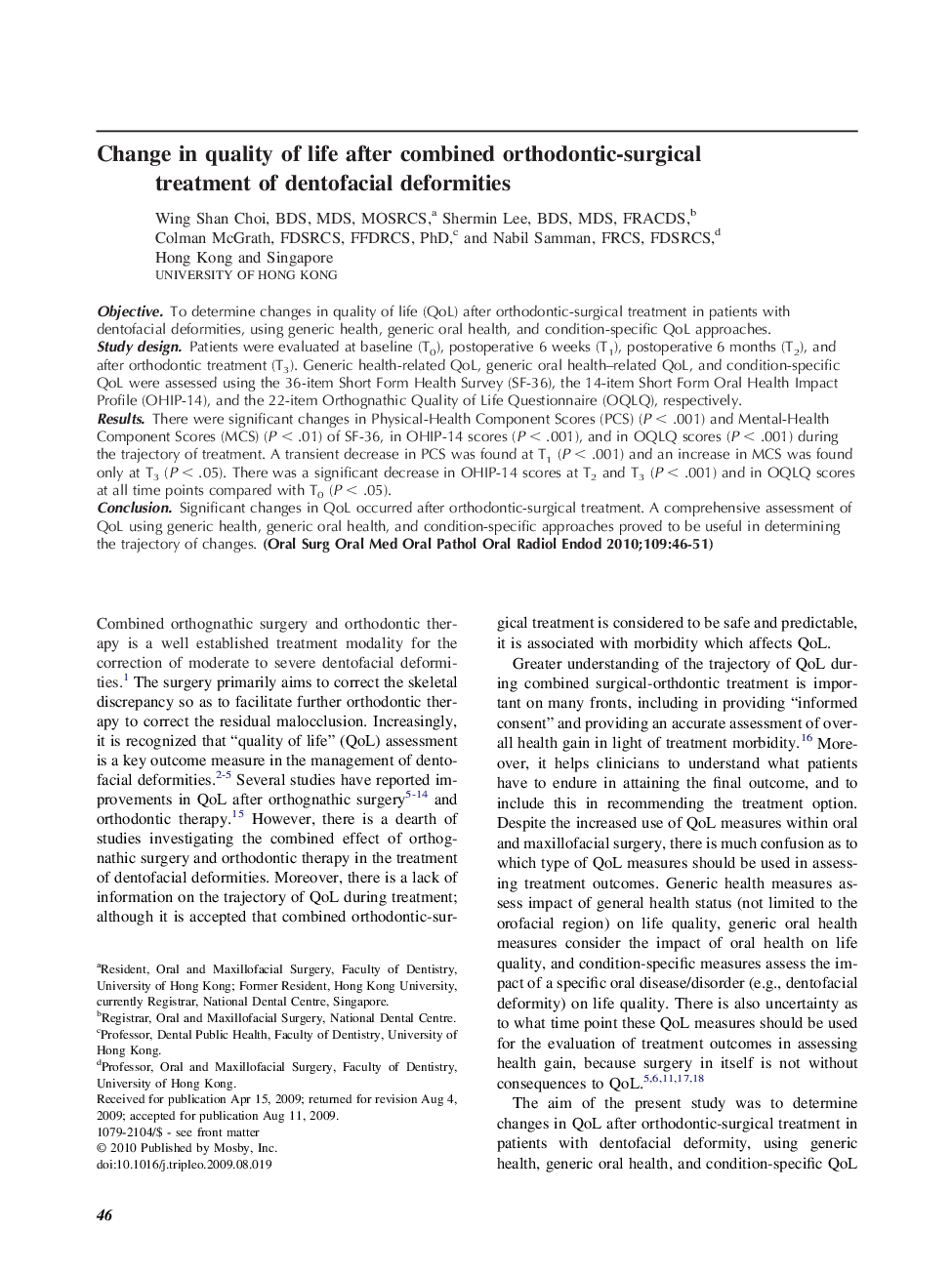| Article ID | Journal | Published Year | Pages | File Type |
|---|---|---|---|---|
| 3167726 | Oral Surgery, Oral Medicine, Oral Pathology, Oral Radiology, and Endodontology | 2010 | 6 Pages |
ObjectiveTo determine changes in quality of life (QoL) after orthodontic-surgical treatment in patients with dentofacial deformities, using generic health, generic oral health, and condition-specific QoL approaches.Study designPatients were evaluated at baseline (T0), postoperative 6 weeks (T1), postoperative 6 months (T2), and after orthodontic treatment (T3). Generic health-related QoL, generic oral health–related QoL, and condition-specific QoL were assessed using the 36-item Short Form Health Survey (SF-36), the 14-item Short Form Oral Health Impact Profile (OHIP-14), and the 22-item Orthognathic Quality of Life Questionnaire (OQLQ), respectively.ResultsThere were significant changes in Physical-Health Component Scores (PCS) (P < .001) and Mental-Health Component Scores (MCS) (P < .01) of SF-36, in OHIP-14 scores (P < .001), and in OQLQ scores (P < .001) during the trajectory of treatment. A transient decrease in PCS was found at T1 (P < .001) and an increase in MCS was found only at T3 (P < .05). There was a significant decrease in OHIP-14 scores at T2 and T3 (P < .001) and in OQLQ scores at all time points compared with T0 (P < .05).ConclusionSignificant changes in QoL occurred after orthodontic-surgical treatment. A comprehensive assessment of QoL using generic health, generic oral health, and condition-specific approaches proved to be useful in determining the trajectory of changes.
